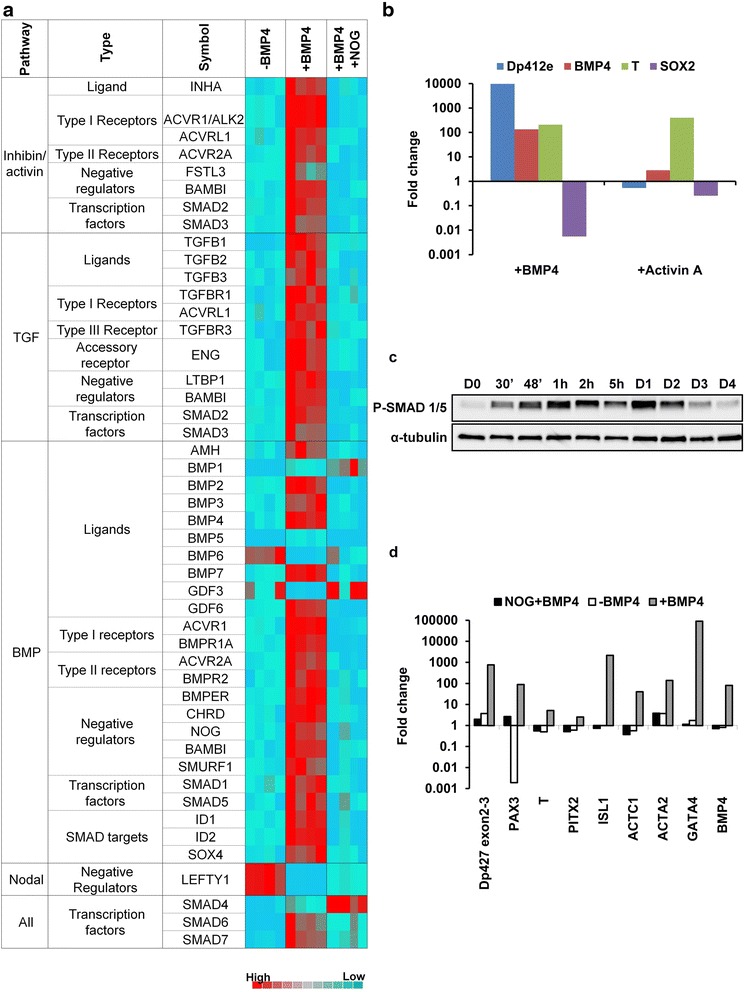Fig. 4.

Correlation of BMP pathway activation with mesodermal commitment and Dp412e expression. a Microarray data showing 2-dCT of Human TGF-β/BMP Signaling Pathway genes in hiPSCs 1 without or 3 days following a single BMP4 treatment or with addition of NOG prior to BMP4 treatment (four technical duplicates/condition). Genes selected for display showed a minimum of ±2-fold change on RQs calculation in either BMP4-treated hiPSCs 1 or NOG/BMP4-treated hiPSCs 1, as compared to hiPSCs 1 without BMP4 treatment (p < 0.05; based on a Student’s t test). b Quantitative RT-PCR in hiPSCs 1 of Dp412e, BMP4, SOX2, and T expression after 3 days of BMP4 or Activin A treatment. Gene expression was normalized to peptidylprolyl isomerase A or cyclophilin A (PPIA) and plotted (log10 scale) relative to the mean expression of hiPSCs 1 at day 3 without treatment (n = 2). c Western blot analysis of phospho-SMAD 1/5 in hiPSCs 1 from days 0 through 4 after BMP4 treatment. α-Tubulin was used as loading control. d Quantitative RT-PCR in hiPSCs 1 of DMD transcripts with specific primers to exons 2–3, PAX3, T, PITX2, ISL1, ACTC1, ACTA2, GATA4, and BMP4 3 days after BMP4 treatment, with or without Noggin (NOG) pre-treatment. Gene expression was normalized to GAPDH and plotted (log10 scale) relative to hiPSCs 1 at D0
